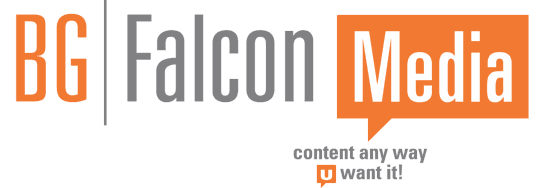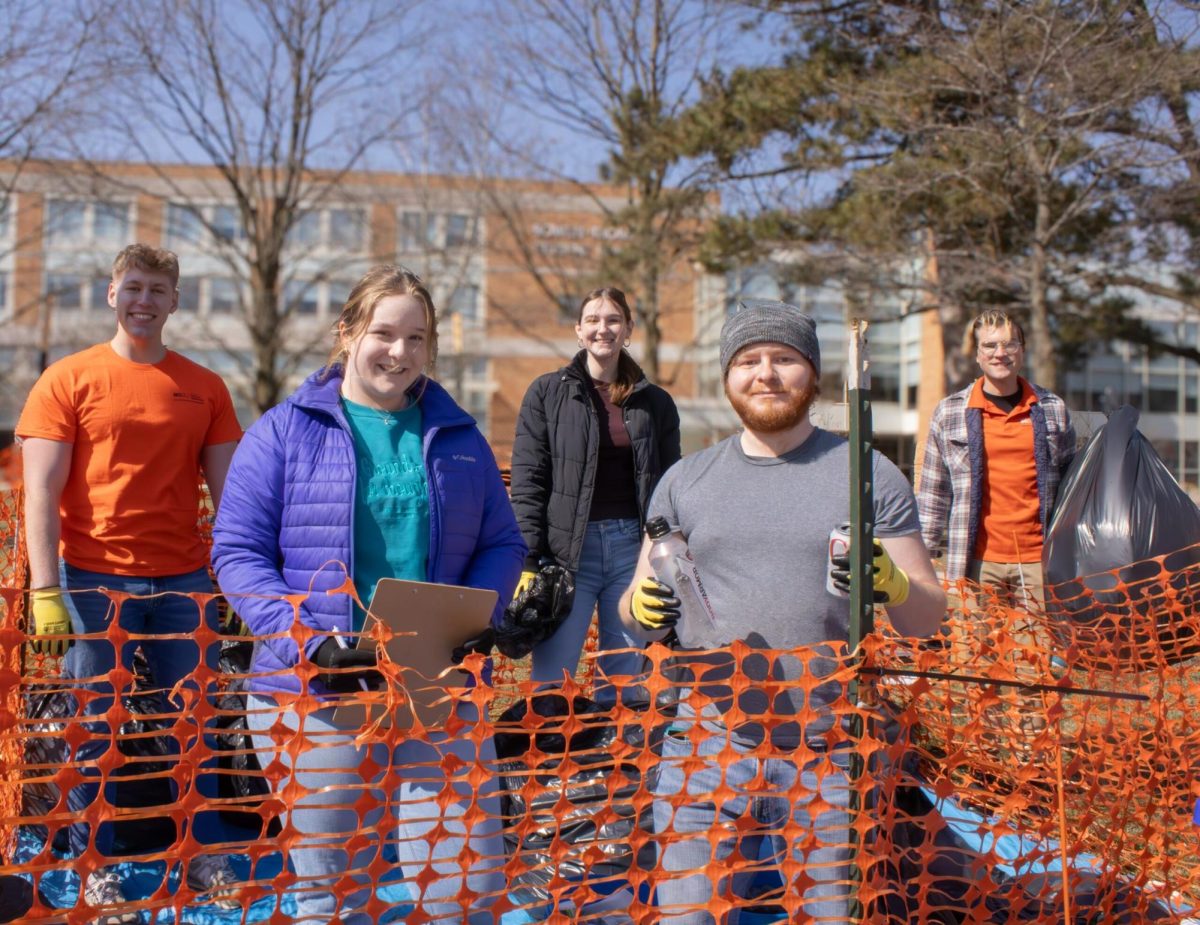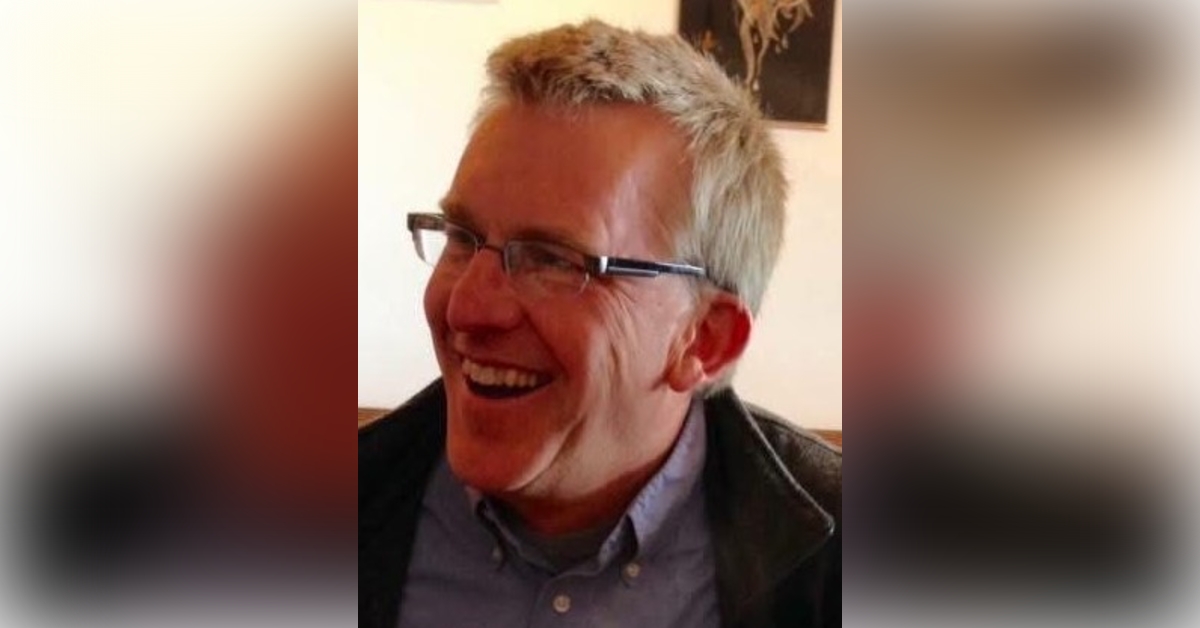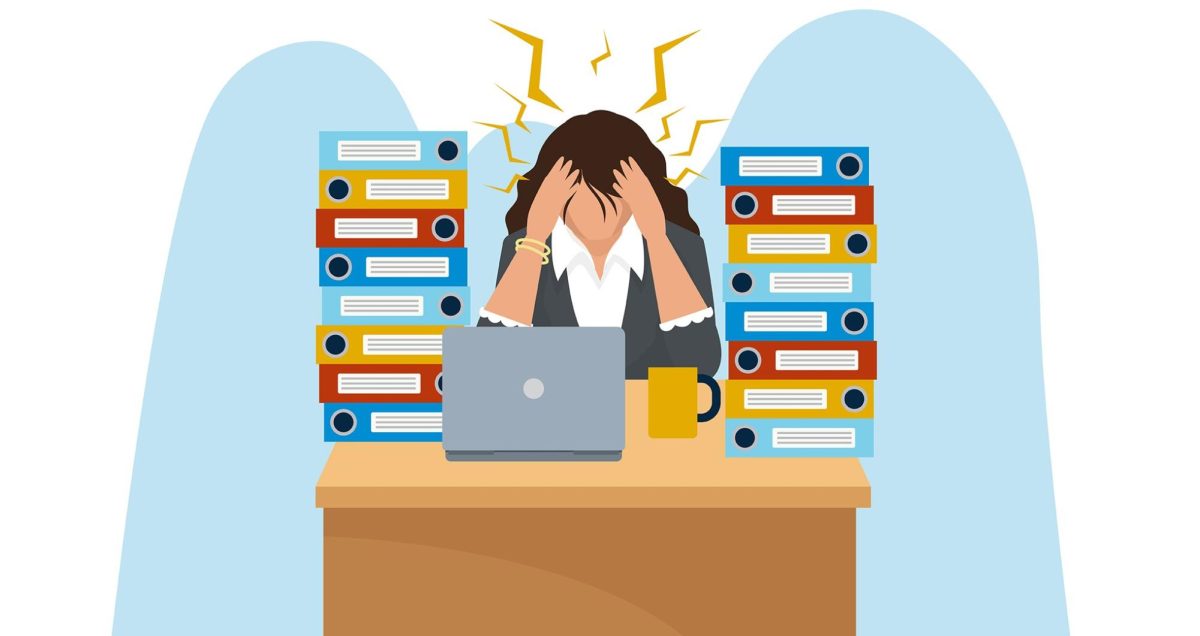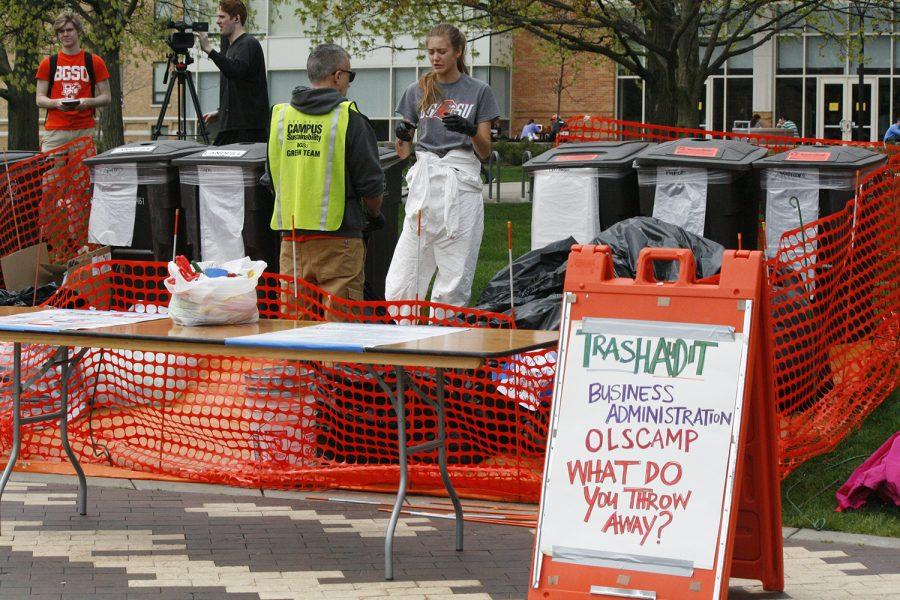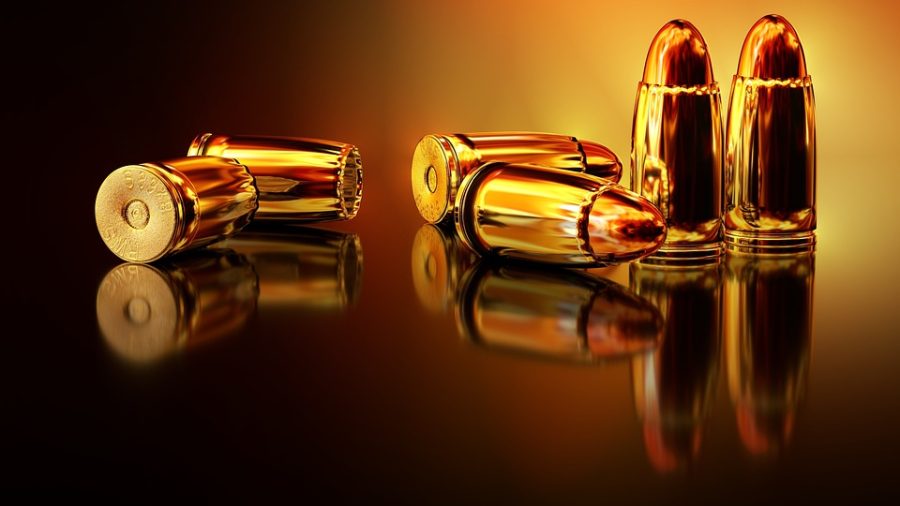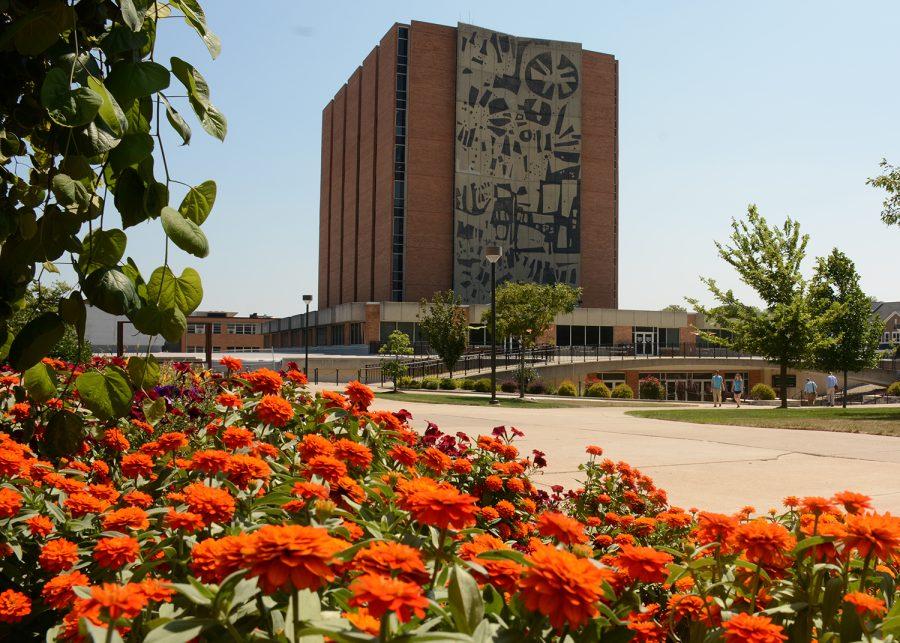Multiple organizations conducted a trash audit to find out how many recyclables are being thrown away by BGSU students.
Last month in the Union Oval, the Office of Campus Sustainability, Wood County Solid Waste Management District and the Environmental Service Club went through trash to give students an idea of how much can be recycled out of what has been previously thrown away.
“The waste audit was to see what is in the trash, first of all, and then how much of it could have been recycled as opposed to thrown in the trash, presumably to be landfilled where it’s lost forever,” said Zachary Hayes, the Sustainability Coordinator for BGSU. “The idea of recycling is to keep materials in the stream of resources because ultimately, landfilled items just end up lost to time.”
To conduct the audit, this team of people, with the help of custodial services, saved the trash the night before from Olscamp Hall, Central Hall and Memorial Hall to sort through. The trash was collected throughout a day or two before the audit.
“We had our, kind of almost looked like an animal-like pen or something like that, set up so we could enclose the area where the trash would be sorted so it wouldn’t blow out in campus if it was windy,” Hayes said. “Essentially, I couldn’t tell you exactly how many bags we went through, but probably almost 20.”
After going through around 20 bags of trash, the team of staff and students found 333 total pieces of recycling. They broke this down into percentages to get a better idea of what was being thrown away that didn’t need to be.
“Twenty-five percent of that was aluminum cans, which surprised us the most, probably because I feel like that is one of the things that most people would recognize as a recyclable item as opposed to a trash item,” Hayes said. “Then we had 36% plastics, like plastic bottles and tubs. Thirty percent was paper, and that was also kind of a shock because paper is frequently recyclable. It’s one of the more common items to recycle.”
They also found specialty recyclable items that can be recycled here on campus.
“The other nine percent was glass or some of the specialty items we recycle, like electronics and plastic bags that we can recycle in the union too,” Hayes said.
After going through all the trash, Hayes estimated they would have filled two bags of just recyclable items.
“You could have taken two of those bags and recycled pretty much the contents of what we looked at, so two out of 20, which isn’t bad. I’m not sure how that stacks up with other waste audits in the past, but overall, we’re doing better than ever,” Hayes said.
The first trash audit was conducted in 2016, set up by the Environmental Action Group. Since Hayes has been here since 2022, there has not been another trash audit.
“Since I started here in fall 2022, we’d never done something like that, and this year we’re doing the Campus Race to Zero Waste, which is an eight-week program we do every spring semester, where we keep track of how many recyclables come out of all the residence halls,” Hayes said.
The Campus Race to Zero Waste is what gave them the idea to do another trash audit.
“The idea came about because it would be something that’s highly visible. We had some signs of out there to give people an idea of what we were doing: digging in the trash and quantifying the different waste streams,” Hayes said.
All three of the buildings that the trash came from had recycling containers that students could use for recyclable items, just like there are in the dorm rooms.
“The idea with trash and recycling is that we put them side by side, so every building has the little bins in the classrooms,” Hayes said.
With the opportunity to recycle, but not always taking it, Hayes said that making it easier for students is always something they take into account.
“So, it’s really a matter of like, is our signage the reason people didn’t throw things in the right bin, or is there a greater reason? We don’t really know why things ended up in the trash that should have been recycled, but we know that they did,” Hayes said.
The Office of Sustainability has put out signs near recycling bins that picture the items that can be recycled to give students the best chance at recycling.
“We take plastic bottles, tubs and cups, except for red solo cups, which are a type of styrofoam. Then jugs, so like milk jugs, preferably rinsed out with no dairy residue in them still,” Hayes said. “Then we have metal cans, such as soup cans, you can rinse them out and recycle them. We do unbroken glass. Then paper products, like cardboard, any type of office paper, newspaper, glossy junk mail, stuff like that, we do take.”
BGSU also recycles specialty items that can’t always be recycled.
“We have electronic recycling boxes around campus. The most common one that people probably would go to is the BG One Desk in the union. You can bring batteries, anything with a cord or an old cell phone,” Hayes said. “You could recycle your plastic grocery bags or any sort of bubble mailers, like the white ones that you frequently get things in. That’s only in the union on the first floor by Falcon Outfitters.”
With the amount of recycling done on campus, Hayes recommends something even better for the environment: reducing.
“You could also just carry your own water bottle around with you. We have over 200 water bottle refill stations on campus. Using an Ozzi container, if you can’t stay to eat at the Carillon, you can take your Ozzi box to go and then exchange it for a new one,” Hayes said. “Then reusable bags to carry things with, which I think most people use their backpacks, but can always be conscientious of it if you go shopping off campus.”
Students can also reduce their waste of disposable cups at Starbucks.
“You can bring your own reusable coffee tumbler or thermos to Starbucks and they will put your drink in it with a $0.10 discount,” Hayes said.
At the end of the year, students can also reduce their waste with the When You Move Out, Don’t Throw it Out (WYMO) program.
“When You Move Out, Don’t Throw it Out is our annual way of diverting many items from the landfill to charities and the Campus ReStore. Anything that students don’t want to take home can be donated in bins in each Residence Hall lobby until move-out ends on May 3rd,” Hayes said.
“WYMO collects clothes, toiletries, household items, school supplies, food and open laundry detergent or beauty products.”
With the waste audit and other recycling and reducing programs here on campus, Hayes says BGSU can always get better with the ever-evolving field of sustainability.
“I think that this waste audit was a nice eye-opening experience to see where we can improve, not only with our recycling but with some of the things that we offer on campus in the first place,” Hayes said.
Hayes said a big part of sustainability is awareness, learning how to do better for the environment and making conscientious decisions to choose reusable over disposable, and to recycle the items listed on signage across campus.
“I think that education is very important and even as an institution we’re always learning new things and trying to strive for the best, a good example of doing something for the public good,” Hayes said.
To learn more about BGSU’s recycling program, visit bgsu.edu/recycle.

